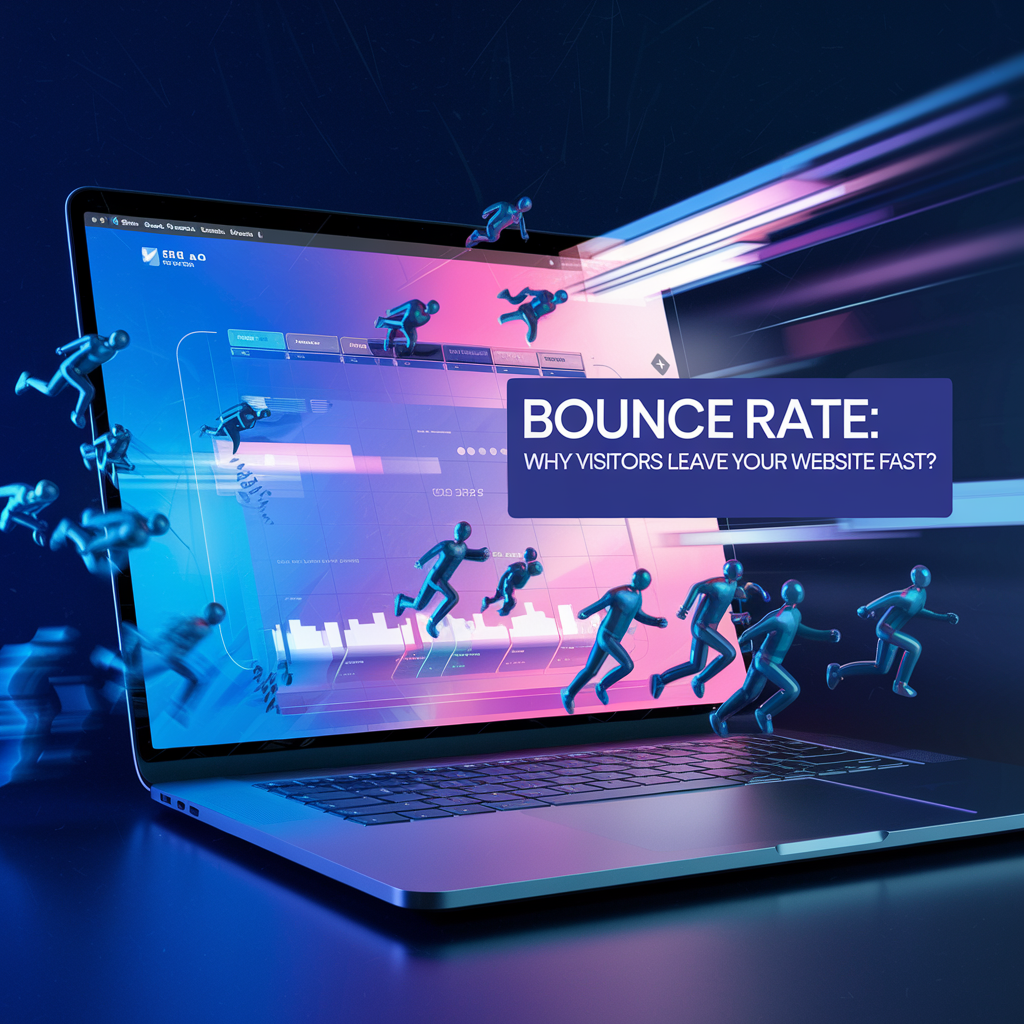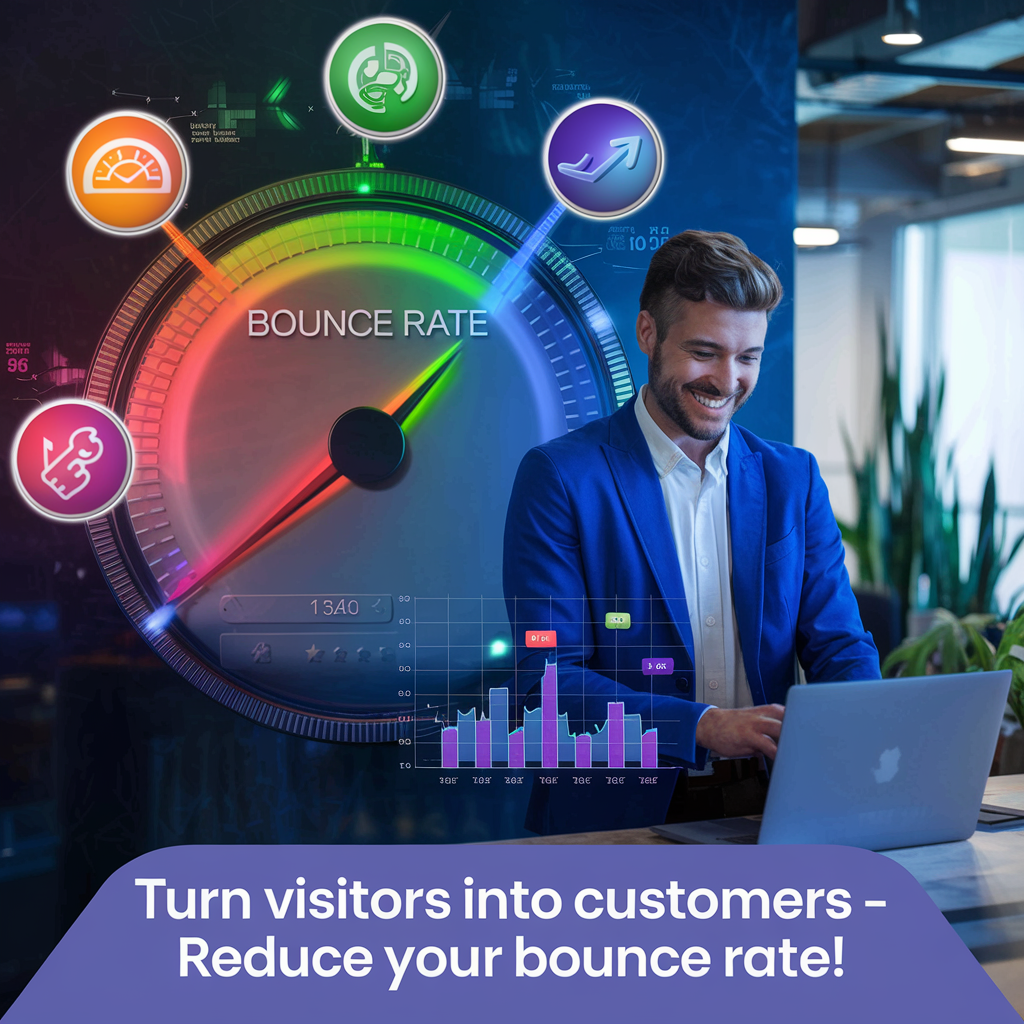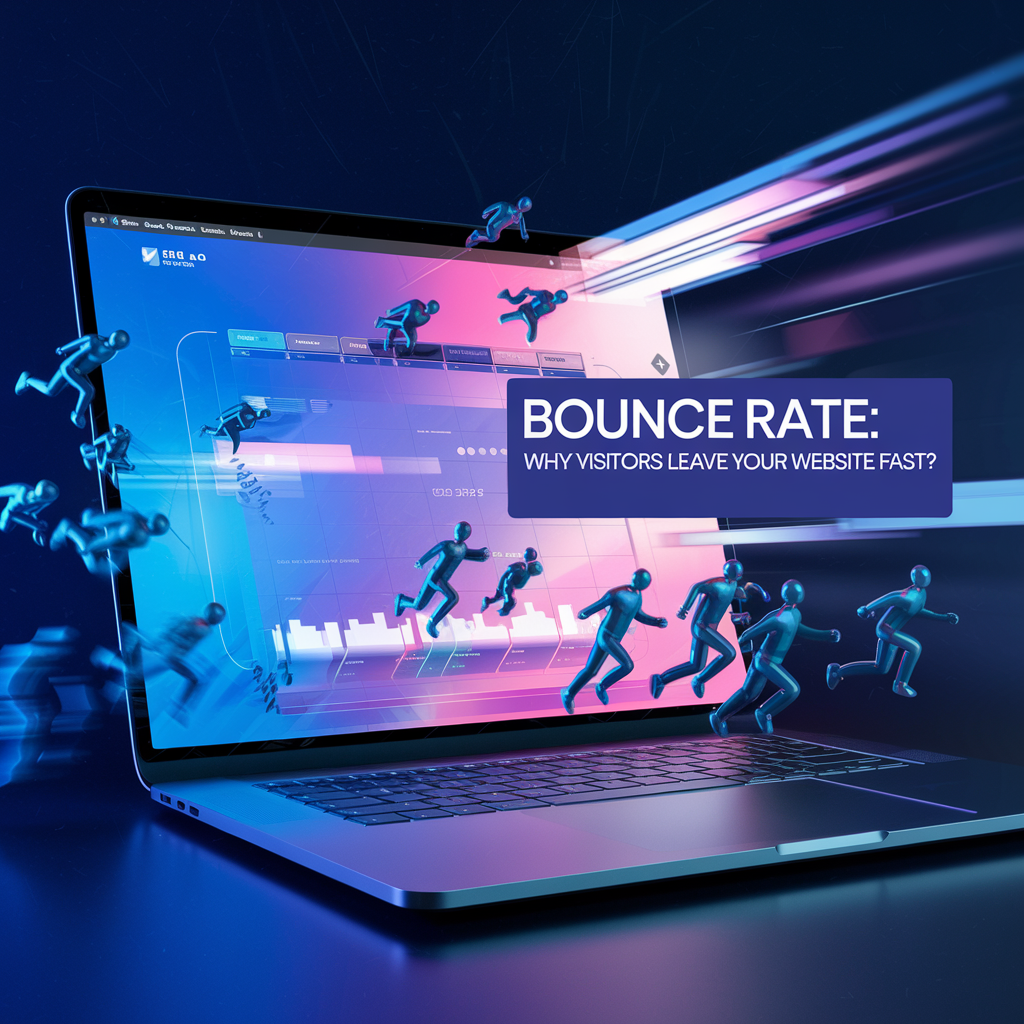Table of Contents
Why Do Visitors Leave Your Website So Quickly? Understanding & Reducing Bounce Rate
Have you noticed that visitors arrive on your website but leave almost instantly? This affects bounce rate, engagement, search rankings, and conversions. Understanding why this happens and how to fix it can greatly improve your website’s performance.

What is Bounce Rate & Why Does It Matter?
Bounce rate refers to the percentage of users who exit your website after viewing just one page. A high bounce rate may indicate low interaction, slow performance, or content that doesn’t match user expectations.
Common Reasons for a High Bounce Rate
- Low Engagement – Visitors aren’t interacting with your content.
- Poor Navigation – A confusing layout may drive them away.
- Irrelevant Content – The page doesn’t align with user intent.
- Slow Load Speed – A sluggish site frustrates users and causes them to leave.
Why Reducing Bounce Rate is Important
A lower bounce rate leads to:
- Better User Experience – Visitors stay longer and explore more pages.
- Improved SEO Performance – Search engines prioritize websites with strong engagement.
- Higher Conversions – The longer users stay, the more likely they are to take action.

Industry Benchmarks for Bounce Rate
| Industry | Good Rate | Average Rate | High Rate |
|---|---|---|---|
| E-commerce | 20-45% | 45-55% | 55%+ |
| B2B | 25-55% | 55-70% | 70%+ |
| Retail | 20-40% | 40-60% | 60%+ |
| Blogs | 65-90% | 70-98% | 98%+ |
| Landing Pages | 60-90% | 70-90% | 90%+ |
For blogs and landing pages, a high bounce rate is expected since visitors often seek quick information. However, for business and e-commerce websites, lowering the bounce rate can significantly boost engagement and conversions.
How to Reduce Bounce Rate & Improve Engagement

1. Optimize Page Speed 🚀
Did you know that if a website takes longer than 3 seconds to load, 53% of visitors leave immediately?
| Load Time | Bounce Rate Increase |
| 1-3 sec | 32% |
| 1-5 sec | 90% |
| 1-10 sec | 123% |
✅ Solutions:
- Optimize images and use next-gen formats (WebP, AVIF).
- Implement a Content Delivery Network (CDN).
- Minify CSS, JavaScript, and HTML.
- Enable browser caching and lazy loading.
- Reduce unnecessary plugins or scripts that slow performance.
2. Improve Website Navigation & User Experience
Poor navigation and cluttered design frustrate users, leading them to leave.
✅ Fix it by:
- Keeping menus clear and intuitive.
- Using easy-to-read fonts and a structured layout.
- Ensuring a seamless mobile-friendly experience.
- Adding breadcrumbs for easy navigation and reducing dead-end pages.
3. Provide High-Quality, Relevant Content
If users don’t find what they’re looking for, they’ll leave fast.
✅ Improve by:
- Writing compelling, keyword-optimized headlines.
- Structuring content with short paragraphs, bullet points, and subheadings.
- Incorporating engaging visuals like images, videos, and infographics.
- Offering value-driven content that solves user problems and keeps them engaged.
4. Strengthen Calls-to-Action (CTAs)
Visitors need clear guidance on what to do next.
✅ Fix it by:
- Using strong, actionable CTA buttons like “Shop Now”, “Get a Free Quote”, or “Subscribe for More”.
- Strategically placing CTAs above the fold and at the end of articles.
- A/B testing different CTA styles to improve response rates.
- Creating urgency with limited-time offers or special promotions.
5. Ensure Mobile Optimization
Over 50% of web traffic comes from mobile devices, making mobile-friendliness crucial.
✅ Optimize by:
- Implementing a responsive design.
- Enhancing touch elements for a smooth mobile experience.
- Reducing intrusive pop-ups that disrupt navigation.
- Testing mobile page speed and ensuring all elements load properly on different devices.
Proven Strategies to Boost Engagement & Reduce Bounce Rate
| Strategy | Impact on Bounce Rate |
| Faster Page Speed | 32% Decrease |
| Mobile Optimization | 35% Decrease |
| Improved Navigation | 18% Increase in Page Views |
| Stronger CTAs | 22% Increase in Conversions |
| Interactive Content | 20% Increase in Time on Page |
Final Thoughts: A Lower Bounce Rate = More Success! 🚀
Improving your bounce rate is essential for better user engagement, SEO rankings, and conversions. By optimizing page speed, enhancing site navigation, and delivering high-quality content, you can keep visitors on your site longer and convert them into loyal customers.
Start optimizing today and watch your website engagement soar! 📈






